Sikorsky officials have hinted at potential commercial derivatives of the company’s military S-97 Raider and SB-1 Defiant technology demonstrators, which are being developed for US Army missions. Powered by rigid, counter-rotating main rotors and a pusher propeller with fly-by-wire controls and active vibration dampeners, the S-97 and SB-1 advance the high-speed X2 technology that Sikorsky has championed over the past decade.
With roughly double the speed of a conventional helicopter, Raider and Defiant are the embodiment of Sikorsky’s top three technological bets: speed, autonomy and intelligence.
But while these aircraft are optimised for combat flying, officials at Sikorsky’s technology development arm – Sikorsky Innovations – also imagine the types transporting company executives and government officials, or even performing civil search-and-rescue missions. Research and engineering vice president Mark Miller says: “Obviously in the search-and-rescue mission and VIP mission… the dimension of speed is very attracting and compelling and we’re looking at those options.”
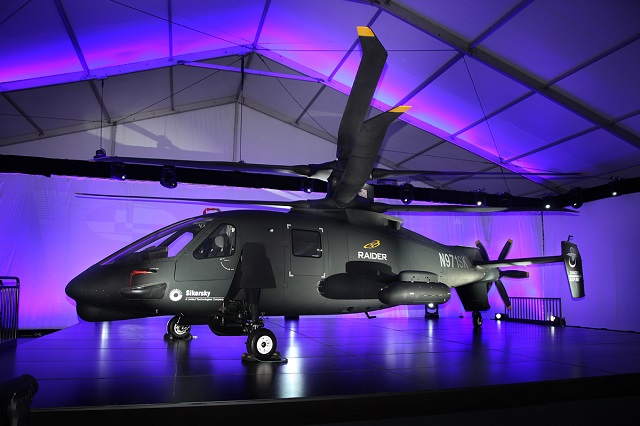
S-97 Raider
Sikorsky
The first of two Raider examples flew in May 2015 and is now steadily expanding the flight envelope to demonstrate speeds in excess of 220kt with a high degree of manoeuvrability while fully loaded with armour and weapons. Raider is conceived as an armed aerial scout, akin to the Bell Helicopter OH-58D Kiowa Warrior that the army is replacing with drones.
Sikorsky is jointly pursuing SB-1 with long-time rival Boeing, under an army programme aimed at demonstrating next-generation rotorcraft technology that could replace the venerable Sikorsky UH-60 Black Hawk and Boeing AH-64 Apache. The compound-coaxial rotor, pusher-propeller design is competing against a third-generation tiltrotor built by Bell and Lockheed.
Miller says the SB-1 programme is working on system and subsystem critical design reviews, and aircraft assembly remains on track to achieve first flight late next year. He says: “We started with [the] X2 technology demonstrator at about 6,000lbs (2.7t) gross weight. Raider is about 12,000lbs (5.4t) gross weight. The bigger animal at 30,000lbs (13.6t) gross weight is SB-1 Defiant. [Raider] is much more productionised; targeted at an armed aerial scout mission or [Future Vertical Lift-Light] mission.
“We’re showing scalability in a much more productionised platform. It’s a marginal increase in cost with a significant increase in speed and capability.”
While these platforms represent the future of Sikorsky from a manufacturing perspective, the innovations team is also working to a shorter timetable, demonstrating several high-payoff technologies in the realm of autonomy and intelligence, that could spin off into upgrades for existing commercial and military platforms.
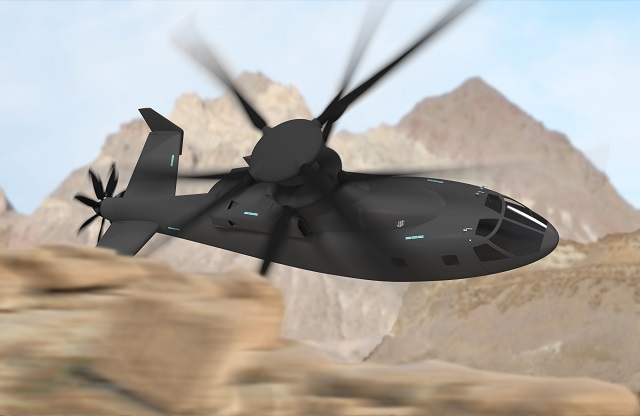
SB-1 Defiant
Sikorsky
AUTONOMY
The company maintains two autonomous flight demonstrators as part of its Matrix research programme – the S-76-based Sikorsky Autonomy Research Aircraft (SARA) and a UH-60A being converted into an optionally-piloted Black Hawk.
In the future, Sikorsky wants to see pilotless UH-60 Black Hawks and S-92s performing disaster relief missions in areas off limits to humans because of chemical, biological or nuclear contamination – places like Fukushima, Japan following the 2011 nuclear reactor meltdown.
In the nearer term, the company wants to automate processes that reduce the pilot workload or improve the chance of mission success. Its S-92 “rig approach” product for safer landings on oil platforms would be an example.
Another scenario might be when a pilot and co-pilot are killed in combat; Sikorsky wants their aircraft to be able to autonomously fly its passengers to safety.
“To us, autonomy does not mean removing the pilot or operator from the cockpit – we’ll leave that to our customers to decide if and when they’re ready to do so,” says Igor Cherepinsky, Sikorsky’s chief engineer of autonomy. “Step one for autonomy is to really improve existing interactions between humans and machines today. There’s lots of accidents today because the human can’t understand what the machine is doing.
“It also reduces crew workload, so now perhaps some missions that were flown with two pilots can be flown with one. That starts the natural progression in our customer’s minds as to where they want to take this.”
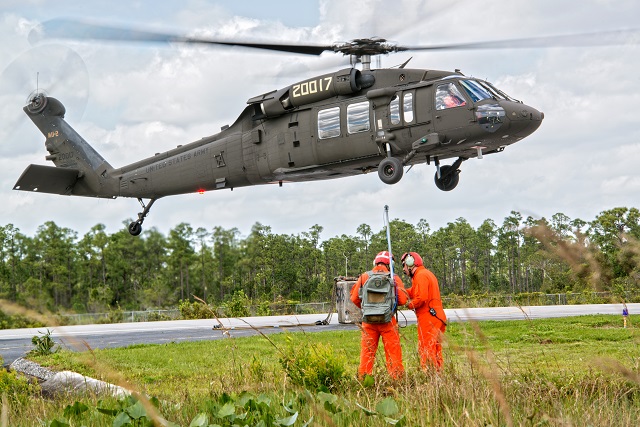
Unmanned UH-60 Black Hawk
Sikorsky
Most recently, Sikorsky partnered with Carnegie Mellon University to demonstrate machine-to-machine teaming using an autonomous, fly-by-wire UH-60MU Black Hawk and Land Tamer unmanned ground vehicle. Cherepinsky says the ground vehicle was tasked to perform a reconnaissance mission and it hitched a ride from the Black Hawk. “The air vehicle on the way to the area figured out where it would potentially land the ground vehicle,” Cherepinsky explains.
“The human operator confirmed that the machines made the right decision and the ground vehicle was dropped at the right spot, and the ground vehicle continued on the recon mission.”
Miller notes that autonomous technology is advancing faster than regulations – and deep-seated biases toward full human control – allow. The US Army, for instance, has ruled out using pilotless helicopters to transport ground troops into battle and isn’t quite sold on autonomous aerial cargo transport. Meanwhile, the US federal Aviation Administration has its hands full trying to regulate unmanned aerial vehicles (UAVs) on the commercial side.
“We can do it in apps and bits or go fully autonomous right now,” says Miller, noting the S-97 is capable of pilotless operations. “We can go as fast or as slow as any particular customer wants.”
Sikorsky Innovations vice president Chris Van Buiten says rotorcraft autonomy is about freeing the pilot to concentrate more on the mission and less on the flight controls. Instead of an S-97 operator being a pilot, that person would become something of a “reconnaissance tactician”.
“You’ll always need the operational curiosity of the human,” Van Buiten says. “Now, imagine the entire bandwidth of the human brain could be on the tactics of the recon mission and we don’t consume 60% of the brain on stick-and-rudder flying of the aircraft.
“Do you want pilots up front? Yes. Do you want systems that would help those pilots eliminate controlled flight into terrain, the leading cause of fatalities in helicopters? Yes, definitely.
“If you were in the back of a Black Hawk, if the two pilots were killed during the flight, do you want the Black Hawk to be able to return to safety and land all of you? Yes.”
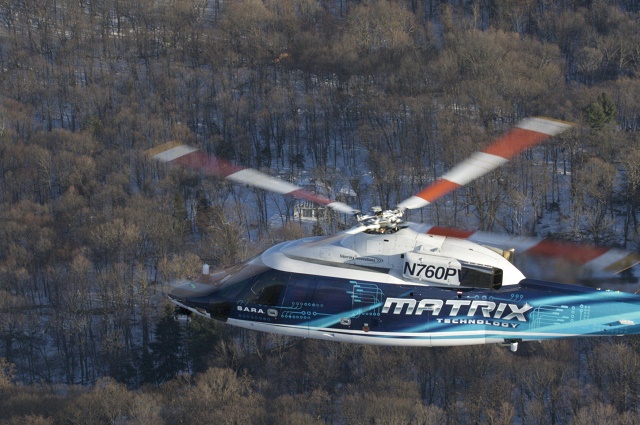
Sikorsky's S-76-based SARA autonomous flight technology research aircraft
Sikorsky
Regarding the company’s recent acquisition by Lockheed Martin, Miller says Sikorsky Innovations now has access to a wider variety of technologies than was available under United Technologies. He adds, Lockheed upper management has been briefed on the research and development arm's current strategy and have not proposed any major adjustments.
“We’ve got a resounding thumbs up,” Miller says. “They think we’ve invested and placed our bets in the right areas. We’re very much looking at disruptive technologies and acting quickly, as opposed to being reactive.
“Like we say in the innovations business, put us out of business before someone else does.”
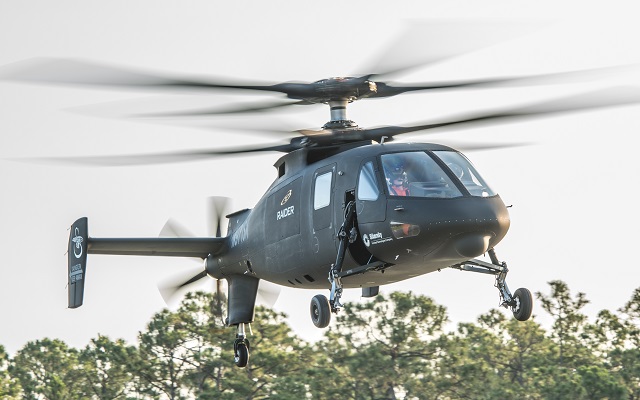
Sikorsky S-97 Raider
Sikorsky
Source: FlightGlobal.com























